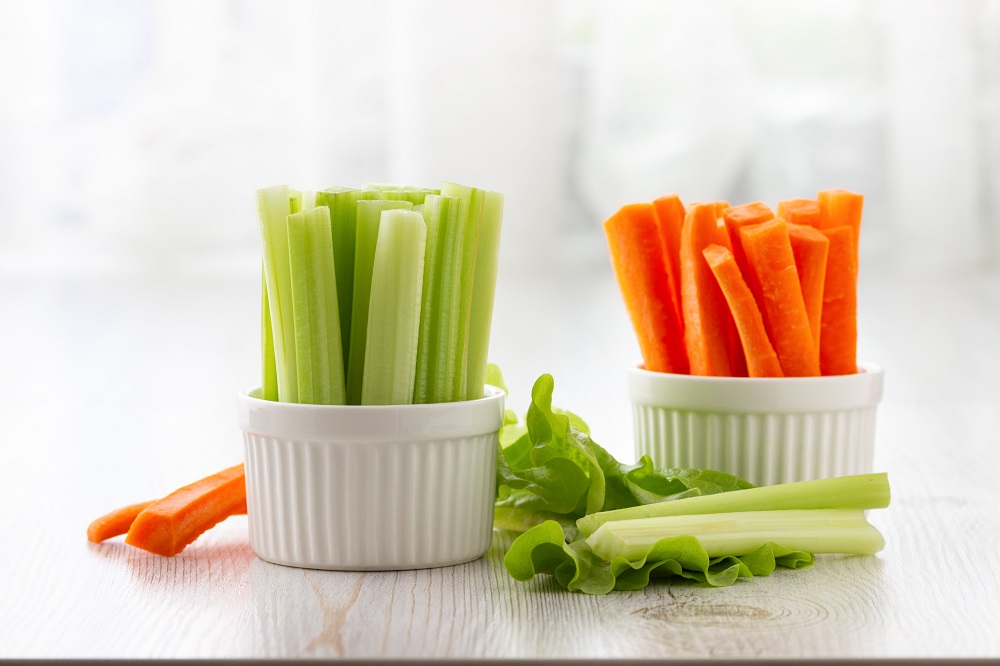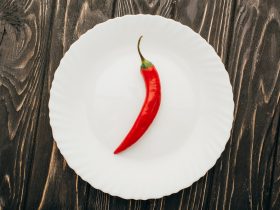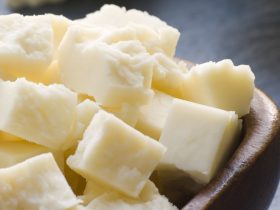A highly versatile plant, nearly every part of the celery plant is used in cooking, either as a spice or as an ingredient in a variety of dishes. However, normally, it is the stalk of this marshland growing vegetable that is thought of when the word celery is mentioned.
With a strong and somewhat astringent taste, certain individuals may find celery unpleasant, or otherwise do not enjoy the fibrous texture of its stalks, and as such may desire to substitute it for similar ingredients that may replicate its nutritional, textural or flavor profile in a dish.
A variety of substitutes exist for celery, depending on the particular dish or purpose that the celery was originally meant to be added to. Whether you wish to replicate the flavor of mirepoix, of which normally contains celery stock, or the crunchy texture of celery stalks in ants-on-a-log, it is likely you have these substitutes in your pantry or crisper drawer at this very moment.
Celery Substitutes in Soups
Perhaps one of the oldest and most common uses of celery, soups and stews often incorporate the green vegetable and its various parts into their ingredient mixture so as to lend a savory and somewhat bitter after-taste that pairs perfectly with other vegetables and meats.
Carrots
Another ingredient commonly added to soups and stews, carrots provide an excellent substitute for celery both in flavor and in texture, though it is likely they will grow softer than celery stalks if left in hot soup for too long a period of time.

Carrots’ uniquely sweet yet earthy flavor, while not exactly a perfect replacement for celery, provide much the same savory-taste complementing notes that celery would, especially if paired with other vegetables of the same effect such as potatoes or onions.
When choosing to replace your celery with carrots, it is best to use approximately half a cup of carrots for every sixty-four grams of celery, or one large stalk.
Bok Choy
While somewhat uncommon in most commercial supermarkets located in the western hemisphere, bok choy or pak choi is a form of cabbage originating from the Chinese mainland wherein it is often used as a main soup ingredient for its crunchy texture and mild yet complementary flavor.
Much like celery, bok choy presents a slightly astringent or bitter aftertaste with a soft savory body, making it an excellent soup ingredient when combined with broth, meat products, or other savory vegetables.
Owing to the fact that, like most cabbage, bok choy is quite high in relative water content, it is likely that this Chinese cabbage will retain much of its shape, size and crunchiness, even when boiled in stock for some time, much like the same properties found in celery stalks.
Asparagus
Moderately similar in appearance and texture to celery, asparagus is yet another ingredient that is oftentimes incorporated into stews or soups in order to bolster its flavor and volume.
While the exact taste of asparagus may depend on an individual’s genetic predispositions, it is often considered a savory ingredient with a rather strong flavor, making it more noticeable in a dish when compared to celery.
This is an excellent substitute for celery in the event that you wish to produce a more robustly-flavored stew or soup, as asparagus is said to pair quite well with certain types of meat and dairy products.
Celery Substitutes in Salads
Certain individuals may find the taste of raw celery to be rather unpleasant, especially in cases wherein the mineral aftertaste is unmasked and allowed to present its full strength, such as in sandwiches or salads.
As such, an excellent alternative to celery are various other green vegetables with similar textural consistency but a somewhat different flavor.
Cucumber
With an extremely mild flavor and a versatile shape that may be cut into any desired shape, cucumber presents an excellent textural replacement for celery, especially for individuals that do not wish to replicate its particular flavor.
This is due to the fact that, like celery, a large portion of cucumber’s cellular structure is primarily made of water, and as such produces a crunchy texture when bitten into.
However, one drawback to using cucumber as a textural replacement for celery in the case of salads is that cucumber will not tolerate the same heat and humidity as celery, causing it to grow soggy and lose its crunchiness in salads that require heating.
Arugula
Though arugula is said to have a distinctly stronger taste than that of celery, this is off-set by the fact that their two individual flavors are quite different from one another, which may or may not be a benefit depending on the sort of flavor profile of the salad being made.
Much like its close cousin vegetables of kale and broccoli, arugula is quite crunchy in its raw form, making it an excellent substitute in salads not only for celery itself but also lettuce or any other crunchy green vegetable you wish to replace.
Cabbage
Perhaps the most commonly found salad ingredient on this list, cabbage’s mild flavor and high micro vitamin count makes it both an excellent celery substitute as well as a healthy alternative that is also quite beneficial for digestion owing to its high fiber content.
Much like celery, cabbage is also capable of withstanding some level of heat and moisture without losing its characteristic crunchiness, making it a potential celery replacement in cases wherein the salad must be warmed or cooked in some way.
Celery Substitutes as a Snack
There are certain situations wherein celery itself is eaten as a snack, usually by dipping it in dressing or mixing it with ingredients that complement its flavor, such as peanut butter or breadcrumbs.
However, these relatively simplistic snacks need not incorporate celery, and there are a multitude of substitute vegetables that you may use, if so desired.
Chinese Celery
Despite its name, Chinese celery is in fact unrelated to celery itself, sharing only a similarity in appearance and texture. In terms of flavor, Chinese celery is quite different from that of ordinary celery, being quite pungent and quite aromatic.
This equates to it being an excellent replacement for celery in snacks that ordinarily involve some sort of dip or sauce that may mask the harsher edges of the Chinese celery’s flavor.
Another method in order to substitute celery for Chinese celery is to first fry the Chinese celery in order to soften its relatively sharp taste. Fortunately, Chinese celery holds up quite well to the process of cooking, and as such may still be used as a dipping vegetable.
Jicama
Native to Central America, jicama is an excellent replacement for celery both in terms of texture and flavor, so long as the snack to be created calls for a slightly sweet vegetable ingredient.
Jicama’s firm flesh is similar somewhat to that of celery, and as such it is perfectly suitable to act as a base for a variety of sweet snacks that normally use celery as the physical scaffolding of the dish, such as ants-on-a-log or stuffed celery.
However, jicama’s only drawback to acting as a celery substitute is its relatively high calorie levels compared to the green stalks, as jicama is quite high in starches and sugars, making it an unsuitable replacement if healthy snacking is an important factor.
Apples
Much like jicama, apples are texturally similar to celery stalks in the correct situation, and as such may act as a suitable substitute for celery in the context of sweet snacks that ordinarily use the stalks as a substrate.
Unlike jicama and celery, though, the sugar present within apples oxidizes quite quickly when left out in the open, and as such it is best to leave the celery substitute uncut until the time comes to use it in your desired snack recipe.
References
1. William Robinson and W. P. Thomson (1920). The Vegetable Garden (3rd ed.). New York, E.P. Dutton and company.
2. Unknown Author. (N.D.) “Celery, Raw” United States Department of Agriculture FoodData Central
3. Edgie Polistico (2017). Philippine Food, Cooking, & Dining Dictionary. Anvil Publishing





Hi, I'm Dom
Dom Eats was started to help other people fall in love with food. While cooking can feel intimidating, it doesn't have to be.